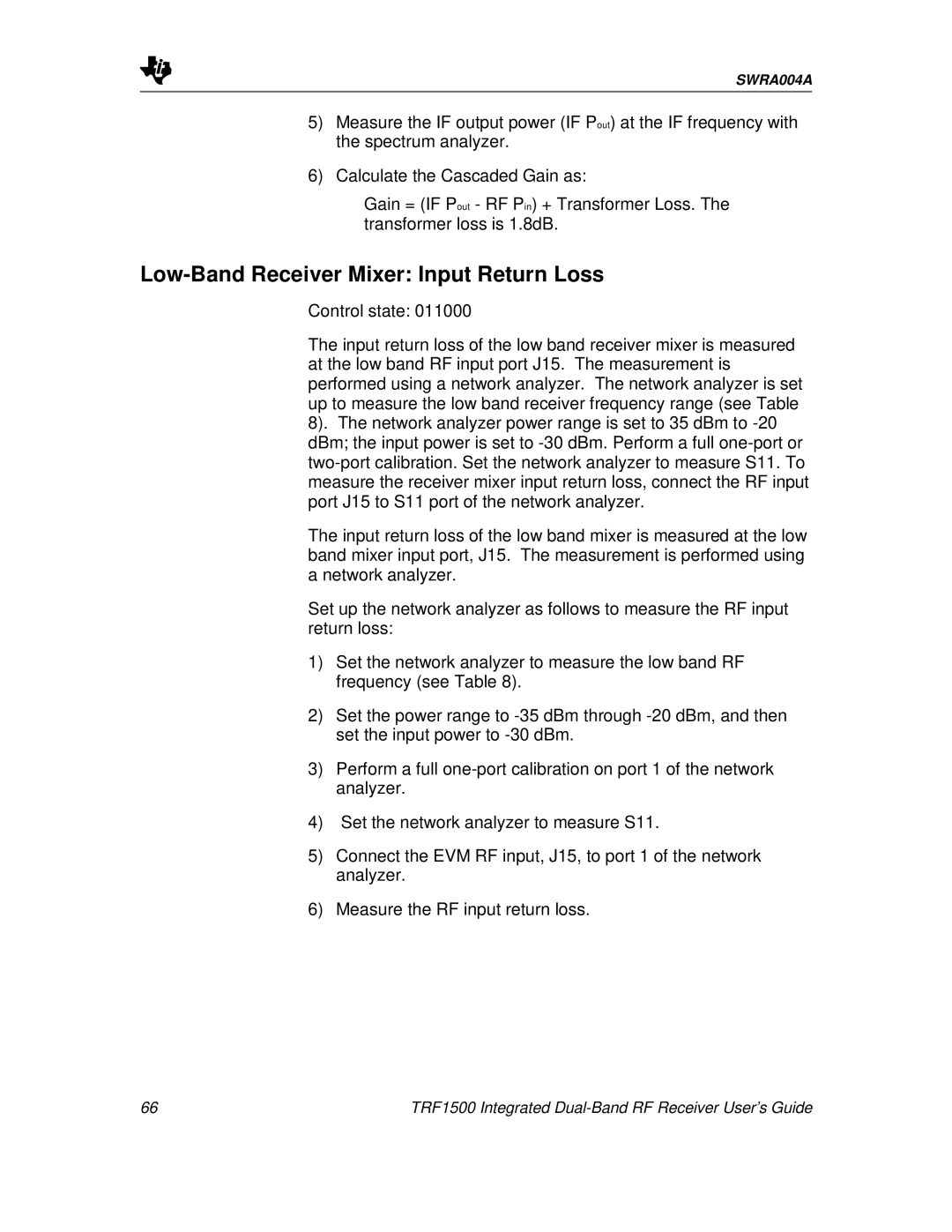SWRA004A
5)Measure the IF output power (IF Pout) at the IF frequency with the spectrum analyzer.
6)Calculate the Cascaded Gain as:
Gain = (IF Pout - RF Pin) + Transformer Loss. The transformer loss is 1.8dB.
Low-Band Receiver Mixer: Input Return Loss
Control state: 011000
The input return loss of the low band receiver mixer is measured at the low band RF input port J15. The measurement is performed using a network analyzer. The network analyzer is set up to measure the low band receiver frequency range (see Table 8). The network analyzer power range is set to 35 dBm to
The input return loss of the low band mixer is measured at the low band mixer input port, J15. The measurement is performed using a network analyzer.
Set up the network analyzer as follows to measure the RF input return loss:
1)Set the network analyzer to measure the low band RF frequency (see Table 8).
2)Set the power range to
3)Perform a full
4)Set the network analyzer to measure S11.
5)Connect the EVM RF input, J15, to port 1 of the network analyzer.
6)Measure the RF input return loss.
66 | TRF1500 Integrated |
